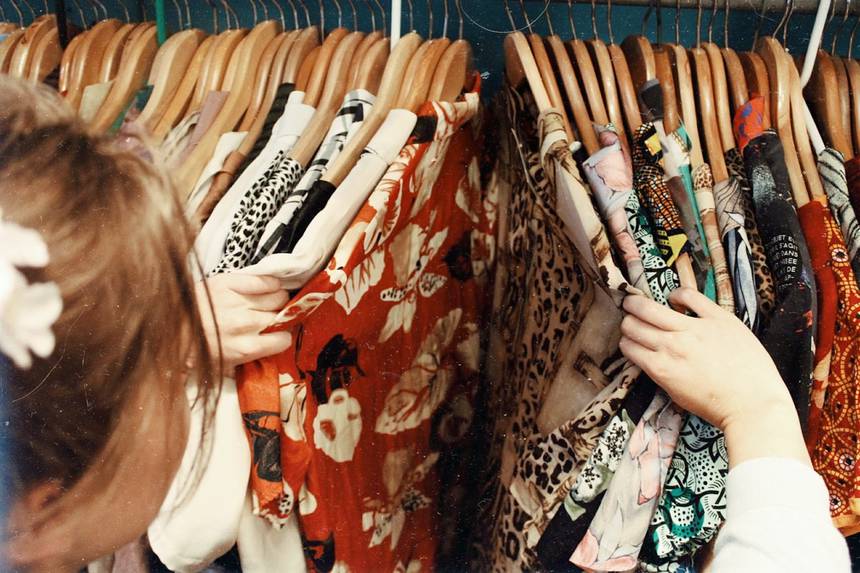Written by Katherine Martinko / TreeHugger
There are some tricks to the trade.
“Shop second-hand” is a message often touted by eco-minded individuals, myself included. “It’s good for the planet! It’s good for your wallet!” we say, which is all good advice, but usually that’s where it ends. For someone unaccustomed to thrift shopping, it can be daunting to go from new or fast fashion shopping to vintage. The former offers seasonal trends and curated looks, while the latter seems like a hodgepodge of random pieces, vast and confusing.
Fortunately, some professional guidance for navigating thrift stores is at hand. The latest episode of the ‘Slow Your Home’ podcast features an interview with Emily Stochl, a veteran thrifter and host of the ‘Pre-Loved Podcast,’ a show that’s all about shopping second-hand. Host Brooke talks to Emily about why she thinks second-hand is so important, and Emily says it comes down to embracing a slower, more ethical form of fashion, one that forces you to be more intentional about what you buy:
“I made this commitment that I only wanted to buy things that were already in our consumer world, rather than have things made new, so that I would be reducing my impact and reducing that harm in any way that I can.”
Emily offers some concrete tips for people who might be new to second-hand shopping, want to refine their approach, or have an urge to slow their rate of consumption.
– Know what you need so that you don’t get swayed by what you want. She keeps a list on her phone of pieces that she needs in her wardrobe and uses it as a guide when shopping.
– Know what you like. Without mannequins and trends to guide you, it’s important to have a sense of personal style. Emily saves pictures she likes to a private collection in Instagram, which helps to keep her on track.
– Know your measurements. Knowing your bust, waist, leg, and hip measurements offhand help you to shop more efficiently.
– Look for high quality pieces. Sift through the heaps of fast fashion clothes to find the treasures. These are identifiable by construction, fabric and materials, brands, fit and feel, etc. Check for holes and stains, and make sure seams are solid.
– Look for natural fabrics. Natural fabrics are easier to repair, age well, and do not release plastic microfibres into the water like synthetics do.
– Get a professional tailor. Forging a relationship with someone in your community who can help to spruce up second-hand treasures is a worthwhile investment.
Emily’s tips are perfect advice for all of us, an antidote to the fast fashion frenzy that has taken over main streets, shopping malls, and social media feeds the world over. We’d all be wise to slow down, consider what our fashion values are, and pursue these in a second-hand setting. As Emily said, many people feel they lack control over how things go in the world, but one thing they can control is what they buy. Thrifting can be your way of saying you care about conserving resources, saving money, and respecting people’s work.
Many more great points to be heard in the interview – you can listen here.



